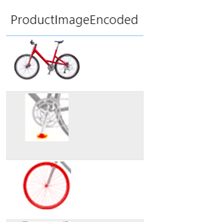Atlanta MS BI and Power BI Group Meeting on June 1st
MS BI fans, please join us online for the next Atlanta MS BI and Power BI Group meeting on Monday, June 1st, at 6:30 PM. Stacey Jones, a Principal Data Solutions Architect at the Atlanta Microsoft Technology Center, will introduce you to Microsoft Cognitive Services and show you how to integrate it with Power BI. For more details, visit our group page and don’t forget to RSVP (fill in the RSVP survey if you’re planning to attend).
| Presentation: | AI + BI = Easier paths to Insights & Action |
| Date: | Monday, June 1st, 2020 |
| Time | 6:30 – 8:30 PM ET |
| Place: | Join Microsoft Teams Meeting Learn more about Teams | Meeting options Computer audio is recommended Conference bridge (toll) number 1 605 475 4300, Access Code: 208547 |
| Overview: | Have you ever wondered how to leverage AI in your Reports? In this presentation, I will show you how to use Azure Cognitive Services in Power BI to accomplish things like detecting the language of a given passage of text, translate that same text into another language, detected the sentiment of the text and more. The possibilities are endless with these techniques, you could use it to assess your companies brand image, analyze what your customers are saying about your company on social media, and many others. No data scientist required! |
| Speaker: | Stacey Jones specializes in mentoring and guiding firms in their efforts to build a modern Data, AI & BI governance programs that empower their business with Self-Service BI and Data Science capabilities. He currently serves as the Principal Data Solutions Architect at the Atlanta Microsoft Technology Center (MTC). |
| Prototypes without pizza: | “Power BI latest features” by Teo Lachev |









